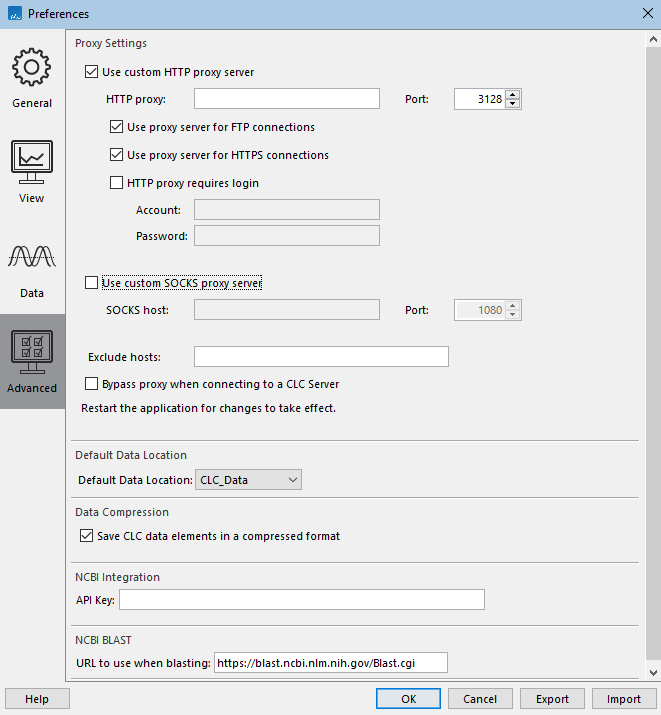Network configuration
If you use a proxy server to access the Internet you must configure CLC Main Workbench to use this. Otherwise you will not be able to perform any online activities.
CLC Main Workbench supports the use of an HTTP-proxy and an anonymous SOCKS-proxy.
To configure your proxy settings, go to Edit | Preferences and choose the Advanced tab (figure 1.27).
You have the choice between an HTTP-proxy and a SOCKS-proxy. The CLC Workbench only supports the use of a SOCKS-proxy that does not require authorization.
You can select whether the proxy should also be used for FTP and HTTPS connections.

Figure 1.1: Advanced preference settings include proxy configuration options.
List hosts that should be contacted directly, i.e. not via the proxy server, in the Exclude hosts field. The value can be a list, with each host separated by a | symbol. The wildcard character * can also be used. For example: *.foo.com|localhost.
The proxy can be bypassed when connecting to a CLC Server by checking the box next to Bypass proxy when connecting to a CLC Server.
Workbenches can be preconfigured to bypass the proxy settings when connecting to a CLC Server by configuring this setting in a proxy.properties file, where the IP address (not the host name) of the CLC Server is provided in the proxyexclude field. See https://resources.qiagenbioinformatics.com/manuals/workbenchdeployment/current/index.php?manual=Per_computer_Workbench_information.html for further details.
If you have problems with these settings, please contact your systems administrator.
